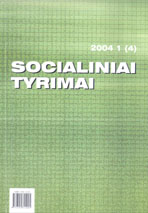The Role of Foreign Owners in the Internationalization of Their Affiliates: Some Examples from Estonia
The Role of Foreign Owners in the Internationalization of Their Affiliates: Some Examples from Estonia
Author(s): Tiia VissakSubject(s): Economy
Published by: VšĮ Šiaulių universiteto leidykla
Keywords: Internationalization; affiliates; foreign owners; enterprise; foreign direct investments.
Summary/Abstract: The paper aimed to show how foreign owners impact the internationalization of their affiliates in Estonia. It was based on the Uppsala, innovation-related and the Finnish models, the born global, network and some foreign direct investment (FDI) literature. The paper included material from seven foreign-owned enterprises in Estonia: Viking Window (a producer of wooden doors and windows), CVO Group (a recruitment company), Tarkon (a producer of mechanical and electronic details and systems), Klementi (a designer, manufacturer and retailer of women’s garments), Lacto (a dairy), Onako Estonia (an oil transit company) and Britannic Estonia (a timber processing group). It concluded that foreign ownership can speed up a firm’s internationalization: it can acquire the necessary resources and assistance in finding foreign partners. Thus, it may enter farther countries or establish its own foreign affiliates relatively quickly. On the other hand, sometimes, the owner or its network partners may inhibit an enterprise’s internationalization: the latter may lose its autonomy and, in some extreme cases, even go bankrupt. Consequently, if a company wants to expand, it has to consider both probable gains and losses from foreign ownership very carefully. After a firm has become foreign-owned, it should try to enhance its autonomy and try to create some network contacts on its own. The paper also offered some subjects for future research: the indirect impact of FDI, the impact of foreign direct investments on the firms from other host countries (for example, smaller/larger, more/less advanced), the characteristics of foreign owners, the reasons of FDI failure and a certain company’s experience in foreign direct investments in different Central and Eastern European countries.
Journal: Socialiniai tyrimai
- Issue Year: 2004
- Issue No: 4
- Page Range: 113-121
- Page Count: 9
- Language: English

